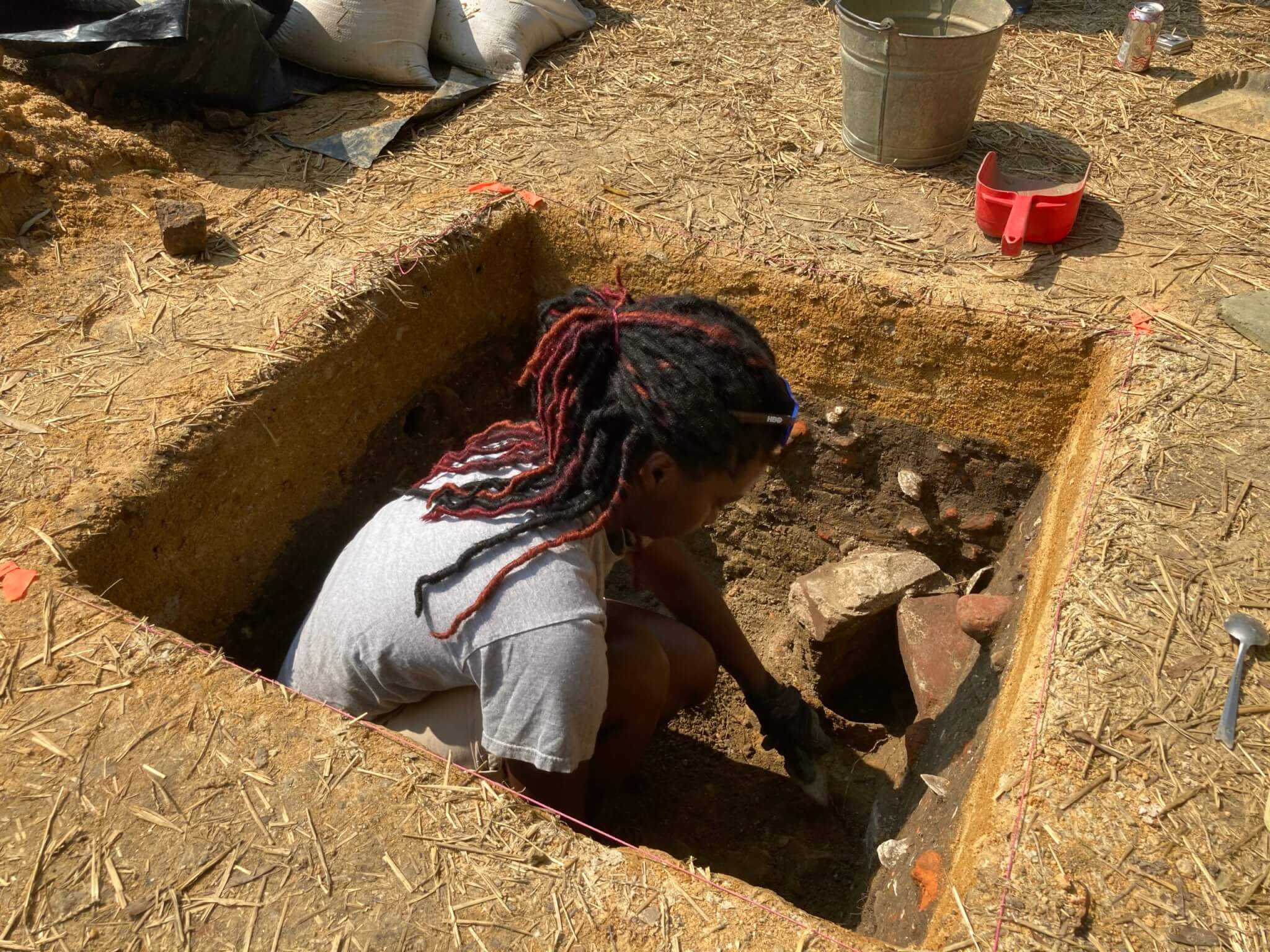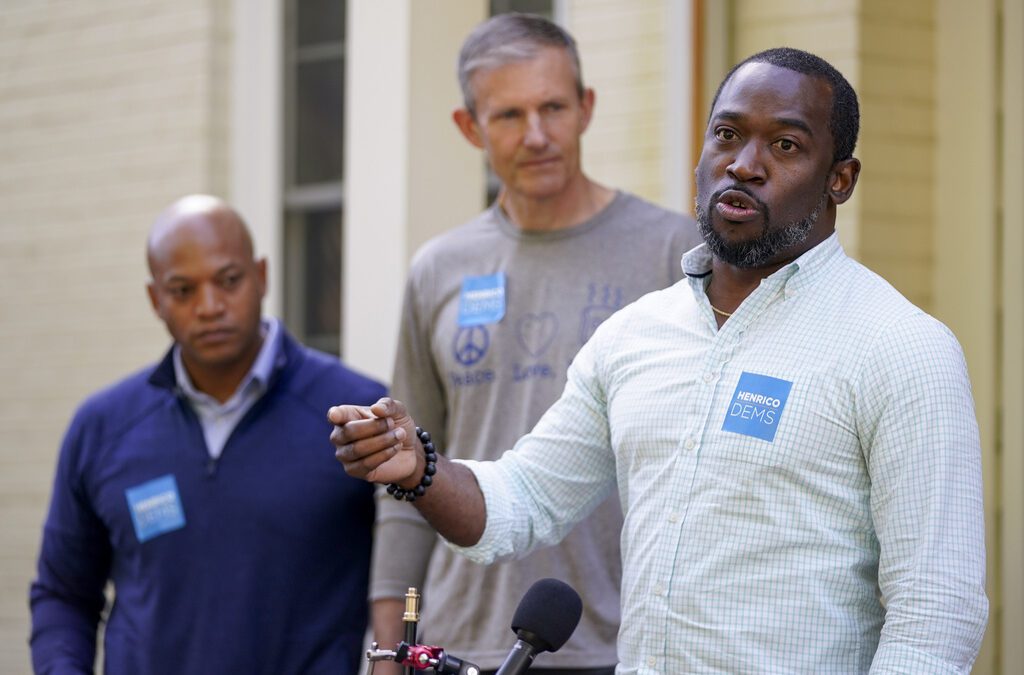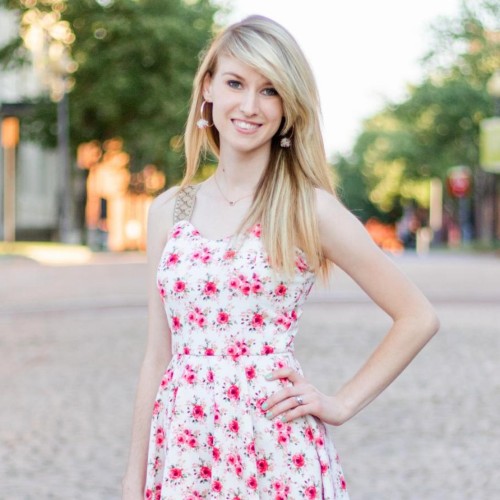
Colonial Williamsburg Archaeological Field Technician DéShondra Dandridge at the excavation site of First Baptist Church’s original permanent location on South Nassau Street, Sept. 23, 2020. This year a partnership led by First Baptist Church and Colonial Williamsburg has resumed archaeological investigation of the site, which last took place in 1957. Photo courtesy of Colonial Williamsburg.
A recent discovery leads to more questions at church excavation site.
WILLIAMSBURG – Each time he preached at First Baptist Church, Gowan Pamphlet risked being arrested. Pamphlet’s congregation in Colonial Williamsburg wasn’t like the other church groups in the area. Comprised of an all-black membership, First Baptist Church wasn’t just unique – it was illegal.
As Virginians fought for freedom from England, they still restricted it here at home. In addition to keeping slaves, state officials banned any large gathering of Black residents, afraid of an uprising. Also, Baptist preachers like Pamphlet faced persecution of a different kind. They were seen as dissenters from the officially recognized Church of England, even after Virginia’s Statute for Religious Freedom ended state sponsorship of the church in 1786.
The only Black ordained minister in the country at the time, Pamphlet first held his meetings at Green Spring Plantation, about five miles outside of Williamsburg. From the brush arbors, built under the direction of a former minister, the enslaved tavern worker spoke to a congregation of hundreds of enslaved and free African Americans. By 1881, Pamphlet’s congregation gathered a few miles down the road, at Raccoon Chase.
Pamphlet gained his freedom in 1793, the same year his church became the only African American congregation accepted into the Dover Baptist Association. He continued as the minister until his death in 1809, the owner of 14 acres of land and two horses. The church meanwhile remains active in Williamsburg today. But the story of how it got to this point, and what members are doing to revive its history, is a unique one.
An unlikely opportunity
About a decade after Pamphlet’s death, Jesse Cole entered the picture. Cole, a prominent white landowner, learned of the congregation’s gatherings. He also realized they had no meeting place. Oral tradition notes that Cole gave the congregation a building on his land.
“He knew that they were in danger because it was against the law for us to assemble,” said Connie Harshaw, First Baptist Church member and president of the church’s Let Freedom Ring Foundation. “So he donated his carriage house, the land that he owned in downtown Williamsburg, to the African Americans for the sole use of worshiping and celebrating their faith.”
In 1856, the congregation erected a new church building. One hundred years later, the congregation moved to 727 Scotland St, its current location. One year later, in 1957, the historic location took a devastating turn toward development.
“When the Rockefellers and the federal government came in to restore Colonial Williamsburg, there was a vote about what would happen to that site. At that time, the vote, the community meeting, was held at Matthew Whaley, which is a school that did not allow Blacks to attend for any purpose,” Harshaw said. “So you can guess that there was no voice from the African American community at that meeting. So they simply paved over [the church] and it’s been used as a parking lot until March of 2020.”
It’s a truly bizarre statement. A restoration effort tore down the first Black church in Virginia, one of the first Black churches in the US and turned it into a parking lot. Over the years, First Baptist’s congregation created the Let Freedom Ring Foundation to preserve their history. Now they’re taking another step.

A surprising discovery
A joint effort between the congregation, the foundation and the Colonial Williamsburg Foundation brought archeologists to the location of the original church building earlier this year. The goal is to find the remains of the 18th century structure, buried for decades under the parking lot. Traction started only weeks after Cliff Fleet became president and CEO of the Colonial Williamsburg Foundation in December 2019.
Now, a team of archeologists digs at the site five days a week. Only 48 hours ago, the group made an incredible discovery.
“Just two days ago, we came down on top of the foundation for the 1856 church,” said Jack Gary, Colonial Williamsburg director of archaeology. “So that was the brick church that we’ve got photographs of, which stood into the 1950s.”
While oral history revealed the church’s approximate location, ground-penetrating radar confirmed the foundation’s existence. That technology gave the team precise coordinates for their search.
The discoveries didn’t stop with finding the foundation they expected.
“Beside the foundation of the 1856 church is the foundation for another building – an earlier building. Now what that building is, is still – we’re not sure of its exact age, other than it definitely pre-dates the 1856 building. So it’s earlier than that. What it was, what its function was, that’s still unclear, and its exact date is unclear. But we’re starting to see the foundations for that earlier building, too,” Gary said. “That’s great because that means that there’s a very good likelihood that the evidence that we need to be able to date and understand that building will be there as well.”
More questions about the church
Gary explained that Cole owned land on both sides of the street. It’s unclear whether or not the carriage house is the building he gave to the congregation or whether another structure on the property served as the meeting place.
“We know the earliest reference of the church being on the lot we’re currently excavating is 1818. And that is when we know what was referred to as the Baptist Meeting House was standing on that property. Whether that’s the carriage house that Jesse Cole gave them or whether it’s an earlier structure, it’s unclear right now,” Gary said. “Part of our job, what we’re trying to figure out, is based on what we see in the ground, what we find archeologically. How do the buildings that we’re uncovering – how do they fit within that timeline and what do they look like? Do they look like carriage houses? Do they look like something completely different? So I think this project will help us to understand that a little bit better.”

The rest of the story
As the team uncovers architectural history, their discoveries also enhance details of the oral account.
“We hope to better understand the sequence of the congregation meeting on that lot and meeting in the Nassau St. area,” Gary said.
Gary explained that the project will continue in phases. The first exploratory phase still has several weeks left before archeologists consider going into phase two. Before that happens, the team will speak with the congregation about the next steps.
“What we’ll do is we’ll take all of the information from all of our excavations. We’ll take a look at it. We’ll come up with recommendations. And we’ll turn to the church and say, ‘Okay, here’s what we think we can understand. Now what questions do you have? How do you want us to proceed with this to help you tell the story, help us tell the story?’” Gary said. “And so that could lead to – and I feel pretty confident that it’s going to lead to – a second phase, which could last upwards of a year of additional excavations.”
A new hope
Harshaw noted excitement within the congregation as the team of experts uncovers the past.
“This is where we are right now: if they did not find one thing, just the general acknowledgment that we existed, that we were here, we were also here in this American history, is just delightful. I mean, it is compelling. It’s overwhelming. Just to have that recognition that the Cole family was compelled enough to allow us to worship. It’s a miracle in and of itself for a black institution to last from 1776, the year of the founding of our country,” Harshaw said. “So it’s pretty exciting. The buzz is pretty deafening.”
Harshaw also acknowledged the impact the discoveries could have on not just the community, but the commonwealth.
“We realize that the past is pretty painful. [We] know that. We all know that. But we also need to shine some light on things that were positive about the experience of the First Baptist Church. Something that’s hopeful,” Harshaw said. “Again, changing the narrative of what Virginia is like to the world. The hope that reconciliation will follow. An acknowledgement, that yes, we did not do this right in the past, but here’s an opportunity. We’re still here. We can change it. [We] can elevate the presence of the African American experience and we can tell the whole story. We can tell the whole story about what happened.”
Church moves forward
Monday through Friday, as professional archeologists work on the site, the public may swing by, watch and ask questions.
“We love talking about it to folks,” Gary said. “It’s always great to have guests and members of the community stopping by to talk to us about it.”
Once the group learns more about the Nassau St site, Hershaw hopes to tell more of the story.
The Freedom Bell, an artifact created by the church in 1886, traveled to Washington, D.C., in 2016. President Barack Obama rang it, symbolically opening the National Museum of African American History and Culture.
“Every chance we get, we say, ‘There has to be a purpose.’ And we have three words that we use all the time when something happens because there are no words. We just say, ‘Look at God.’ Look at God because it has to be God that’s doing this,” Harshaw said. “[We] are hoping that he (Obama) will come down to the church and ring the bell. We are hoping he will come to Colonial Williamsburg and that the nation’s attention will be focused on him coming to ring this bell in its rightful place.”
Amie Knowles reports for The Dogwood. She can be reached at [email protected]
Politics

Biden administration bans noncompete clauses for workers
The Federal Trade Commission (FTC) voted on Tuesday to ban noncompete agreements—those pesky clauses that employers often force their workers to...

Democratic shakeup in Virginia primaries for governor, lieutenant governor
Richmond Mayor Levar Stoney quit his bid for governor and jumped into the race to be the Democratic nominee for lieutenant governor. The race for...
Local News

The zodiac signs of 12 iconic women offer insight into their historic accomplishments
Zodiac signs can tell you a lot about someone’s personality. Whether they’re an earth, water, air, or fire sign, these 12 categories (which are...

Virginia verses: Celebrating 5 poetic icons for National Poetry Month
There’s no shortage of great writers when it comes to our commonwealth. From the haunting verses of Edgar Allan Poe, who found solace in Richmond's...





